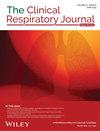Survival Outcomes in EGFR-Mutant Non-Small Cell Lung Cancer With Brain Metastases: Kaplan–Meier and Cox Regression Analyses Across Treatment Stages
Abstract
Background
Epidermal growth factor receptor tyrosine kinase inhibitors (EGFR-TKIs) have shown significant efficacy in patients with brain metastases (BMs) from EGFR-mutated non-small cell lung cancer (NSCLC). However, acquired resistance is inevitable, and clinical data addressing key questions across treatment stages remain insufficient, limiting the formulation of precise treatment strategies.
Methods
This retrospective study analyzed 302 EGFR-mutant NSCLC patients with BMs treated at Shandong Cancer Hospital (2014–2022). Patients were divided into three cohorts: cohort A (first-/second-generation EGFR-TKIs without third-generation use), cohort B (first-/second-generation followed by third-generation EGFR-TKIs), and cohort C (first-line third-generation EGFR-TKIs). Survival outcomes were evaluated using Kaplan–Meier and Cox regression analyses across three treatment stages. Propensity score matching (PSM) adjusted for baseline imbalances.
Results
Third-generation EGFR-TKIs demonstrated superior progression-free survival (PFS) in first-line therapy compared to earlier-generation agents (median PFS1: 14.2 vs. 11.2 months; p = 0.0021), particularly for intracranial control (median iPFS1: 18.0 vs. 12.2 months; p = 0.0058). Patients with uncommon EGFR mutations had significantly shorter PFS on third-generation EGFR-TKIs than those with common mutations (4.4 vs. 12.9 months; p = 0.012). After resistance, combination therapy with immune checkpoint inhibitors (ICIs), antiangiogenics, and chemotherapy extended overall survival (OS) versus non-ICI regimens (median OS2: 17.3 vs. 10.4 months; p = 0.004).
Conclusions
Third-generation EGFR-TKIs are effective first-line options for BMs but show limited efficacy against uncommon mutations. Post-resistance regimens integrating ICIs, antiangiogenics, and chemotherapy may improve survival. Reassessment of genetic and PD-L1 status is critical for guiding sequential therapy.


 求助内容:
求助内容: 应助结果提醒方式:
应助结果提醒方式:


